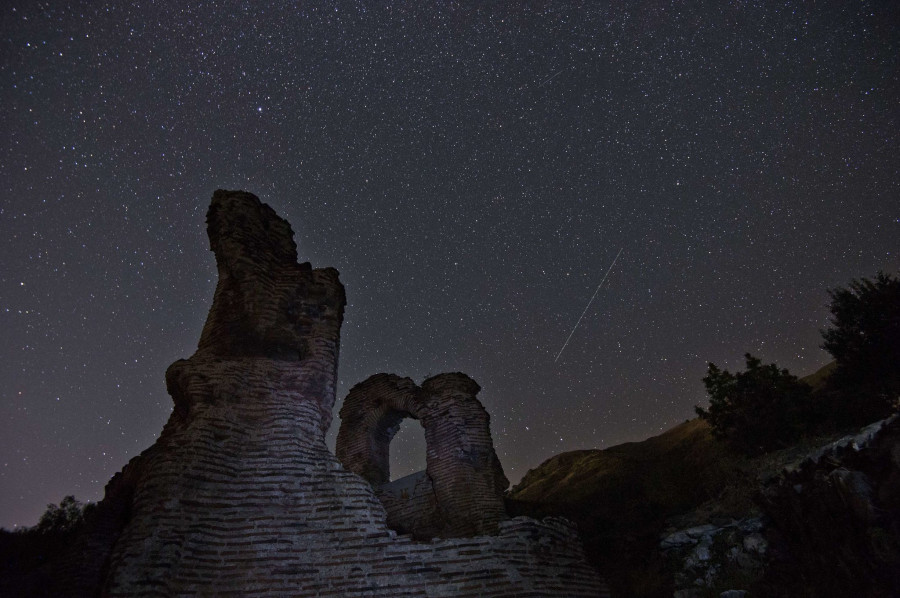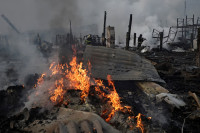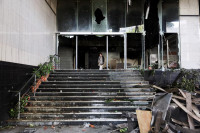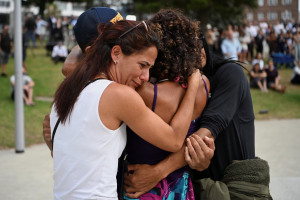World
Get ready for the Perseids Meteor Shower: ‘It will rival the stars in the sky.’
Prepare for the Perseids.
The New York Times
Prepare for the Perseids.
This week, the annual meteor shower will illuminate the night sky with cosmic fireworks, creating a particularly dazzling display for skygazers across the Northern Hemisphere.
NASA estimates that between 160 and 200 meteors will ignite in Earth’s atmosphere every hour during the display’s peak on Thursday night and Friday morning. Normally the shower has between 80 and 100 space specks.
You can thank Jupiter and its intense gravity for turning this year’s meteor shower into a meteor hurricane.
The Perseids occur when Earth runs into pieces of debris floating in the solar system that were left behind by Comet Swift-Tuttle. The 17-mile-wide dirty snowball orbits the sun about once every 133 years. It made its last close pass by the sun in 1992.
But you won’t be seeing the leftovers of that event. A general rule of thumb with meteor showers is that you are never watching remnants from a comet’s most recent orbit. Instead, the burning bits come from the previous pass. In this case, the debris were ejected when Comet Swift-Tuttle visited in 1862 or earlier.
For this week’s shower, Jupiter’s gravity has tugged together at least three meteor streams left by the comet into Earth’s path. Our planet will run into a cluster of leftovers from Comet Swift-Tuttle’s rendezvous in 1862, 1479 and 1079.
“You’re seeing pieces of ice that have been orbiting for that long kamikaze-ing themselves into the Earth’s atmosphere,” said Bill Cooke, an astronomer with NASA’s Meteoroid Environment Office.
Jupiter’s large gravitational pull is constantly influencing the meteor streams, according to Dr. Cooke. Sometimes it tugs them toward Earth, and sometimes it pushes them farther away. The last time a special Perseids shower like this one occurred was in 2009.
The Perseids zoom through the atmosphere at around 133,000 miles per hour and burst about 60 miles overhead, according to Dr. Cooke. Most of the meteors are about the size of a grain of sand, but some can be as large as a silver dollar. You should be able to see many of the small bursts, but it’s the handful of large ones that create jaw-dropping fireballs when set ablaze.
“It scares you to the bone when you see it coming across,” said Jackie Faherty, an astronomer from the American Museum of Natural History. “If you get just one, it will be embedded in your vision for all time. I don’t think you forget things like this.”
The best way to see the Perseids meteor shower, according to Dr. Faherty, is to go to a location with a clear view of the entire night sky. Ideally you would go somewhere with dark skies, but she said the main thing to look for is a spot that offers a wide, unobstructed view. She said that even in a crowded city like New York you could still spot some of the flashes by going to a rooftop. The best time to watch is before dawn on Friday.
Before getting their hopes up, stargazers should be warned that the weather and moonlight can obscure the show. If that happens, there are several livestreams of the event to watch, like one hosted by NASA and one hosted by Slooh, a global system of cameras and telescopes pointed at the sky. Still, Dr. Faherty suggests people get outside and try to see it for themselves.
“It is worth waiting out there for an hour, two hours, three hours, four hours even to catch a glimpse of something like this,” she said. “When you get a good one, it will rival the stars in the sky.”




 18.12°C Kathmandu
18.12°C Kathmandu














